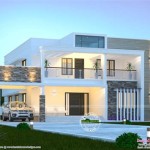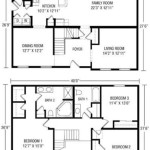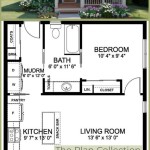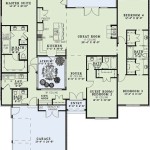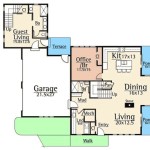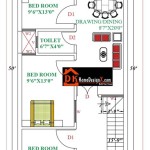Beautiful House Plans With Cozy Hearth Rooms And Suites
The evolving concept of the modern home prioritizes not only aesthetic appeal but also functional comfort and individualized spaces. Within this paradigm, house plans incorporating cozy hearth rooms and thoughtfully designed suites are gaining significant traction. These features contribute to a sense of warmth, relaxation, and privacy, transforming a house into a welcoming sanctuary.
A hearth room, traditionally a space centered around a fireplace, serves as a secondary living area, often positioned near the kitchen. This proximity fosters a sense of connection and encourages informal gatherings. Suites, encompassing bedrooms, bathrooms, and often dressing rooms or sitting areas, offer occupants a private retreat within the larger home. Combining these elements in a cohesive design requires careful consideration of space allocation, architectural style, and individual lifestyle needs.
The Allure of the Hearth Room: Creating a Focal Point for Gathering
The hearth room embodies the concept of casual elegance and relaxed living. It is a space designed to encourage conversation, relaxation, and a sense of togetherness. Unlike the more formal living room, the hearth room is characterized by its warmth and inviting atmosphere, typically achieved through the integration of a fireplace as its central feature. The fireplace itself can range from a traditional wood-burning model to a modern gas fireplace or even an electric fireplace, each offering different aesthetic and practical advantages.
The placement of the hearth room within the house plan is crucial to its functionality. Locating it adjacent to the kitchen allows for seamless interaction between the cook and other family members or guests. This proximity facilitates easy meal preparation and informal dining arrangements, making the hearth room a natural hub for daily activities. Furthermore, a connection to outdoor spaces, such as a patio or deck, can extend the hearth room's utility during warmer months.
Furnishing a hearth room requires careful consideration of both comfort and style. Plush seating, such as oversized sofas or comfortable armchairs, is essential for creating a relaxed atmosphere. Textiles play a significant role in enhancing the room's warmth; consider using soft rugs, textured throws, and decorative pillows. Lighting is equally important; a combination of ambient, task, and accent lighting can create a versatile space suitable for various activities, from reading to socializing.
Beyond the fireplace and comfortable furnishings, other elements can contribute to the hearth room's appeal. Built-in bookshelves provide storage and display space for books, artwork, and personal mementos. A well-placed television can offer entertainment options without dominating the room's aesthetic. Window treatments, such as blinds, shades, or curtains, allow for control over natural light and privacy. Ultimately, the hearth room should reflect the homeowner's personal style and preferences, creating a space that is both functional and aesthetically pleasing.
Designing Luxurious and Functional Suites: Prioritizing Privacy and Comfort
The concept of a suite goes beyond the traditional bedroom and bathroom arrangement. It represents a private sanctuary within the home, designed to provide occupants with a sense of comfort, privacy, and personalized space. A well-designed suite typically includes a bedroom, a bathroom, and often a dressing room, walk-in closet, or sitting area. The specific configuration and size of the suite will depend on the homeowner's needs, preferences, and the overall size of the house.
The bedroom component of the suite should be designed to promote restful sleep. Considerations include the placement of windows to minimize morning sunlight intrusion, the use of blackout curtains or shades, and the selection of a comfortable mattress and bedding. The color palette should be calming and conducive to relaxation. Soundproofing measures can also be incorporated to minimize noise from other areas of the house.
The bathroom within the suite should be designed for both functionality and luxury. Features such as a double vanity, a separate shower and soaking tub, and ample storage space can enhance the user experience. High-quality fixtures, such as faucets, showerheads, and toilets, can add to the sense of indulgence. The design should also prioritize ventilation and natural light.
A dressing room or walk-in closet is a valuable addition to any suite, providing ample space for clothing, shoes, and accessories. The closet should be organized efficiently, with designated areas for hanging clothes, folded items, and shoe storage. A vanity with a mirror and good lighting can be incorporated for dressing and grooming purposes. A sitting area within the suite offers a private space for reading, relaxing, or working. This area can be furnished with comfortable seating, a small table, and appropriate lighting. The sitting area can also serve as a transitional space between the bedroom and the bathroom.
The location of the suite within the house plan is also important. Ideally, the suite should be situated away from high-traffic areas, such as the kitchen or living room, to ensure privacy and quiet. A separate entrance to the suite can further enhance its privacy. When designing a suite, it is important to consider the needs of the occupants. For example, a suite designed for an elderly person may require features such as grab bars in the bathroom and wider doorways for wheelchair access.
Integrating Hearth Rooms and Suites in Home Design: Achieving Harmony and Balance
The successful integration of hearth rooms and suites in a house plan requires careful consideration of the overall design aesthetic, the flow of space, and the needs of the occupants. The goal is to create a home that is both beautiful and functional, with distinct areas for socializing, relaxing, and retreating. Key considerations include architectural style, space allocation, and material selection.
Architectural style plays a significant role in shaping the character of the home. A traditional home may feature a formal hearth room with a grand fireplace and ornate detailing, while a modern home may opt for a more minimalist hearth room with clean lines and a contemporary fireplace. Similarly, the suite design should complement the overall architectural style of the house. The style of the house can lend itself to specific hearth room and suite designs. For example, a craftsman-style home might feature a hearth room with a stone fireplace and built-in bookshelves, and a suite with a clawfoot tub and vintage-inspired fixtures. A contemporary home might feature a hearth room with a sleek gas fireplace and minimalist furnishings, and a suite with a walk-in shower and a floating vanity.
Space allocation is another critical factor in integrating hearth rooms and suites. The size and location of each space should be carefully considered in relation to the overall size and layout of the house. A large home may be able to accommodate a spacious hearth room and a luxurious suite, while a smaller home may require a more compact design. The flow of space between these areas is also important. The hearth room should be easily accessible from the kitchen and other living areas, while the suite should offer a sense of privacy and separation from the rest of the house.
Material selection can significantly impact the overall aesthetic and feel of the hearth room and suite. Natural materials, such as wood, stone, and brick, can add warmth and texture to the hearth room, while luxurious materials, such as marble, granite, and high-end fabrics, can enhance the suite's sense of indulgence. The use of color and lighting can also play a significant role in creating the desired atmosphere. Warm colors and soft lighting can create a cozy and inviting atmosphere in the hearth room, while cool colors and brighter lighting can create a more serene and relaxing atmosphere in the suite.
Ultimately, the integration of hearth rooms and suites in a home design should be tailored to the individual needs and preferences of the homeowner. A collaborative approach between the homeowner, architect, and interior designer is essential for creating a home that is both beautiful and functional. The resulting design should reflect the homeowner's personal style and create a space that is both comfortable and inviting.
Incorporating accessibility features into the design of both the hearth room and the suite is important, especially for aging in place or for accommodating individuals with disabilities. This may include features such as wider doorways, grab bars in the bathroom, and ramps or elevators for access to different levels of the house.
The use of technology can also enhance the functionality and comfort of both the hearth room and the suite. Smart home features, such as automated lighting, temperature control, and security systems, can add convenience and energy efficiency. Entertainment systems, such as home theaters and sound systems, can provide entertainment options for the entire family.
Finally, it is important to consider the environmental impact of the design. Sustainable materials and energy-efficient appliances can help to reduce the home's carbon footprint. Passive solar design principles can also be incorporated to maximize natural light and ventilation, reducing the need for artificial lighting and air conditioning.

House Plan 5035 Aveon Manor Luxury

Summertime Farmhouse Plus Guest Suite House Plan Southern Living Plans

Beautiful Farm House Style Plan 3151 Crystal Falls

Homes With The Best Great Rooms House Designers

Spacious And Open Best Floor Plans For Families Blog Homeplans Com

Open Floor Plans Build A Home With S Layout Blog Dreamhomesource Com

Warm And Welcoming Cottage House Plans Blog Dreamhomesource Com

Modern Open Floor House Plans Blog Eplans Com

Bardington 5 Bedroom European Style House Plan 9353

31 Rooms In A House Design Ideas For Diffe Types Of
Related Posts

